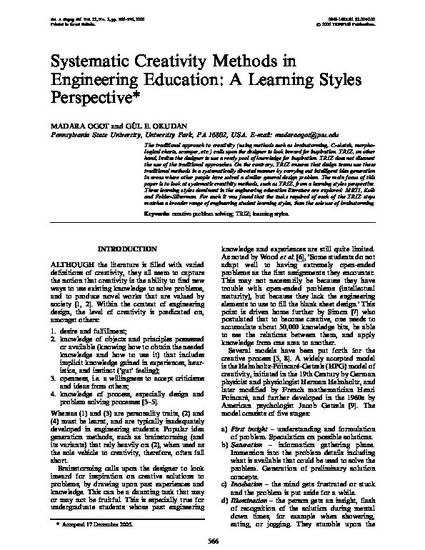
Article
Systematic Creativity Methods in Engineering Education: A Learning Theory Perspective
International Journal of Engineering Education
(2006)
Abstract
The traditional approach to creativity (using methods such as brainstorming, C-sketch, morphological charts, scamper, etc.) calls upon the designer to look inward for inspiration. TRIZ, on other hand, invites the designer to use a ready pool of knowledge for inspiration. TRIZ does not discount the use of the traditional approaches. On the contrary, TRIZ ensures that design teams use these traditional methods in a systematically directed manner by carrying out intelligent idea generation in areas where other people have solved a similar general design problem. The main focus of this paper is to look at systematic creativity methods, such as TRIZ, from a learning styles perspective. Three learning styles dominant in the engineering education literature are explored: MBTI, Kolb and Felder-Silverman. For each it was found that the tasks required of each of the TRIZ steps matches a broader range of engineering student learning styles, than the sole use of brainstorming
Keywords
- creative problem solving,
- TRIZ,
- learning styles
Disciplines
Publication Date
2006
Publisher Statement
Copyright 2006 TEMPUS Publications
Citation Information
Madara Ogot and Gül E. Okudan. "Systematic Creativity Methods in Engineering Education: A Learning Theory Perspective" International Journal of Engineering Education Vol. 22 Iss. 3 (2006) p. 566 - 576 Available at: http://works.bepress.com/gul-kremer/16/
